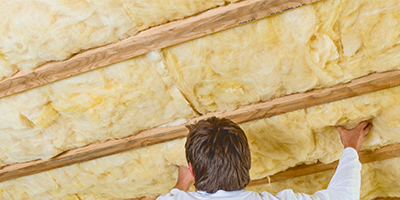Jargon busting - 5 technical terms to know before building a home
Jargon busting: 5 technical terms to know before building a home
Home comfort tips
The jargon can be like a foreign language when building a new home. Understand these terms & why they're important before making choices you can't change.
Building a new home can be a daunting task. Ensuring it is a comfortable place for you and your family to live while being friendly to your finances are two major considerations throughout the planning and construction stages. It doesn’t help during these stages when building industry jargon comes flying at you thick and fast. Without a lot of experience in the building world, some of these terms can feel like a foreign language, and you can be trapped into making decisions that you can’t change after the build, all for lack of trustworthy, simple information.
Bradford understands this frustration, so we’ve compiled a list of terms you’ll need to understand when you’re making selections for your new home. Understanding these 5 key terms will bring you one step closer to helping make your dream home an affordable, comfortable reality.
1R-Value
What it means: Your walls, ceiling and floor are not just there to provide structure, but also to provide a “thermal barrier” – protecting your home from not just the physical weather like rain and wind, but also the transfer of heat in and out of the home. How effective your home is at providing that thermal barrier is a function of the R-value of the insulation that goes in the walls. When choosing insulation for your home – arguably the most important factor in your home’s comfort level – you’ll be presented with different R-Values for different products. Simply put, R-Value measures an insulation product’s ability to block heat, or its resistance to heat flow. The higher the R-Value, the thicker the insulation segment and the higher the level of insulation the product can provide.
Why it’s important: In New Zealand, new homes are required to have a certain level of insulation in order to meet government regulations. However, this is a minimum requirement, and often you can save money on energy bills over the life of the home by upgrading your insulation at the building stage. Decisions like the R-Value of your wall insulation can’t be changed once the wall has been built.
Get help: To get some free advice on the optimum level of insulation for the kind of home you are building, and where you are building it, please contact Bradford.
2Rw (weighted sound reduction index)
What it means: When building a home, it’s important to consider how noisy it will be. Walls have the effect of not only dividing a room, but providing a thermal (heat and cold) and noise barrier. The Rw is the measure of how effective your wall is at stopping noise from travelling between rooms, or from the outside into your home. Typically in New Zealand, homes are built with no insulation in internal walls, meaning it’s only a couple of thin slices of plasterboard dividing noisy living areas from quieter sleeping areas.
Why it’s important: This is important to know because it is difficult to retrofit insulation to walls – you have to take off the plasterboard to do it. So, the only time you can choose to include insulation in internal walls is when you are building. Who wouldn’t prefer to have their kids, living room or noisy kitchen on the other side of an internal wall with an insulation with an Rw value of 42, like Bradford Acoustic Gold insulation, rather an uninsulated wall – you’ll lower noise transfer by as much as 10 decibels and your ears will thank you later. And if you live near a noisy road, under a flight path or have close neighbours, you’ll be happy you opted for a high Rw when building and chose to keep the peace in your home.
Get help: Find out more about Bradford Acoustic Gold.
3ACH (Air Changes per Hour)
What it means: ACH is how many times in an hour the air in your home (or a specific room) is replaced with fresh air. More technically, it’s the measure of air volume added to, or removed from, a space divided by the volume of the space, per hour. An ACH can be both too low (when a house is built to modern air-tightness standards, but adequate ventilation has not been included), and too high (typically older, leaky buildings where the expensive heated or cooled air is escaping through leaks in the walls, floor and ceiling).
Why it’s important: When building your home, consider the ACH as a key factor in preventing condensation which can cause mould that contributes to asthma and allergies. A combination of insulation and ventilation is essential to keeping your home healthy, providing better air quality and energy efficient cooling in summer.
Get help: Our sister company, Edmonds Ventilation, is the expert on home ventilation. With a full range of natural, powered and hybrid home ventilators, check them out at www.edmondsventilation.co.nz.
4House orientation
What it means: Not everything related to energy efficiency for a new home comes back to building products. House orientation is the position of the building in relation to the sun and wind patterns, and it can make your home a more comfortable and energy efficient place to live. Factors such as climate zone, breeze patterns, latitude and natural shading all have a massive impact on how it feels to live in your house, and if you are able to change the angle of your house on your block it can make a big difference. However, even if you can’t change the house orientation, understanding how your house is oriented in regards to these factors can help you take advantage of them.
Why it’s important: Think about how it will feel to have full afternoon sun on your bedroom windows year-round. In some climates, that’s lovely, while in others, it’s awful. House orientation can help you avoid these issues. And if you can’t change the house orientation, because it’s an existing home or your block stops you from making a change, you can make other choices which will help, such as relocating living areas to take advantage of winter sun and cooling summer breezes, creating shade in the right place, and choosing carefully where to put something as simple as a shed.
Get help: Your Home, an Australian government website, has a great article on house orientation, with advice on choosing the best orientation and handy checklists for designing a new home, renovating an existing home, choosing a project home and choosing a unit.
5Roof pitch
What it means: On average, the roof takes up 30% of your façade, depending on the roof pitch. The roof pitch is the angle of your roof and can play a huge role in the overall look of your home. The roof pitch is most often expressed in degrees of an angle.
Why it’s important: Aside from the design aspects (a steeper roof pitch means a roof is more prominent from the street), roof pitch can affect your ability to do other things, such as add solar panels or ventilation to your roof in the future. A steeper roof can also be more expensive as the steeper the roof, the larger the area it covers. However, a roof which is not steep enough can have issues with drainage and affect your ability to use the roof space for storage or other uses.
Get help: If you’re looking at a tiled roof, CSR Monier are the experts and are happy to advise you on roof pitch.
For home builders just starting out, this may seem like the tip of the iceberg, but it’s a good place to start. Making your home a comfortable place to live is the most important part of your build, and growing your knowledge base will only help you get there faster.



